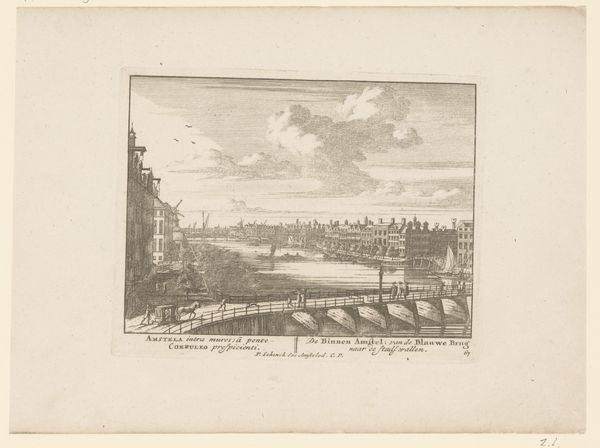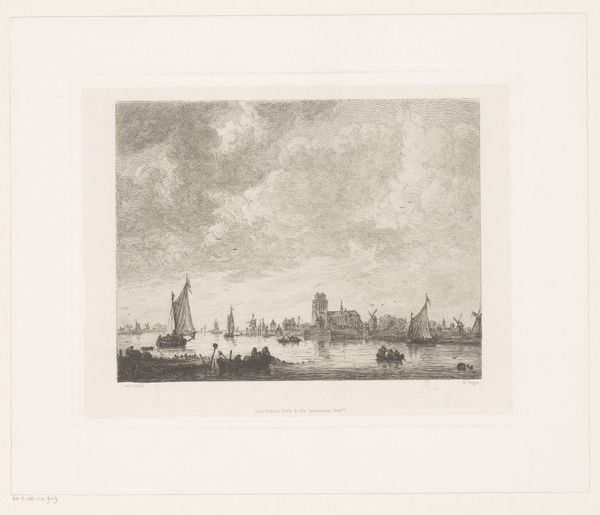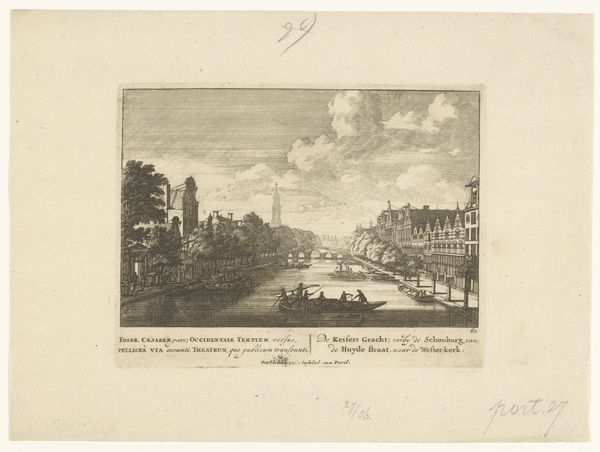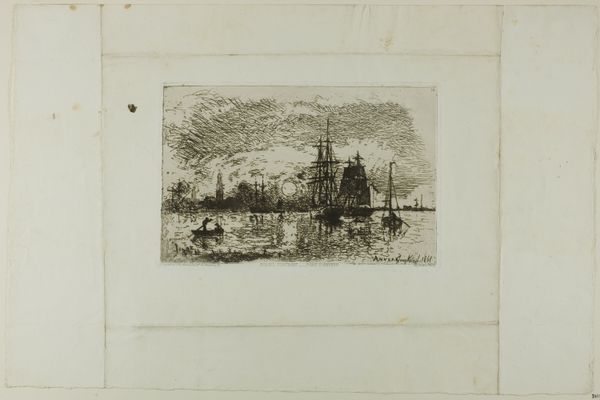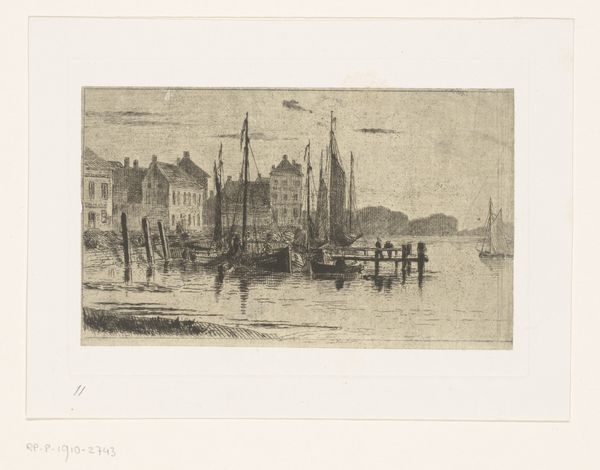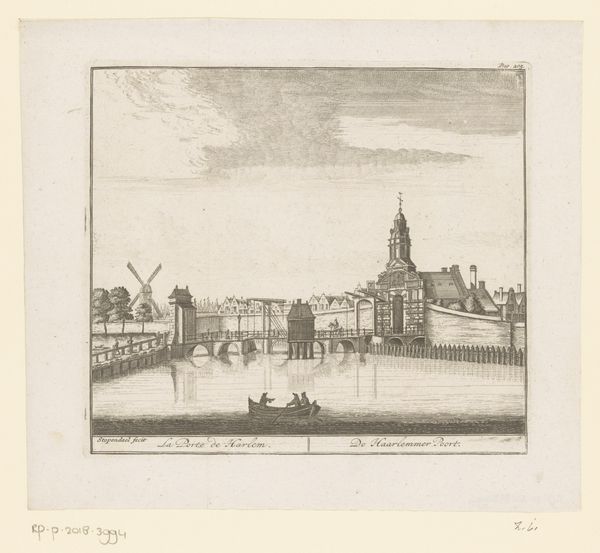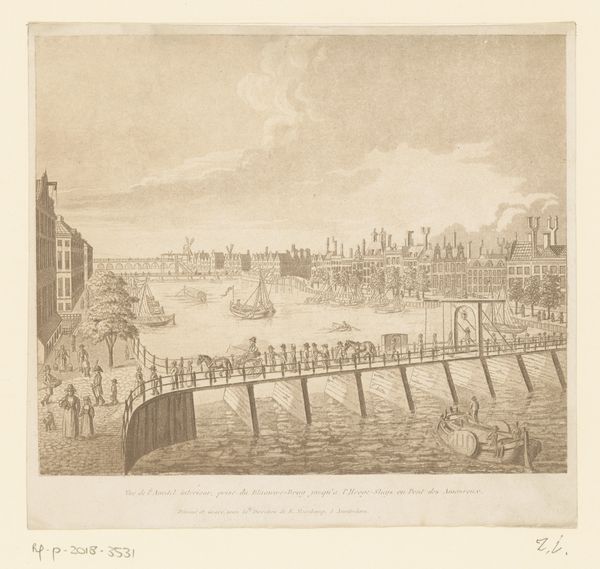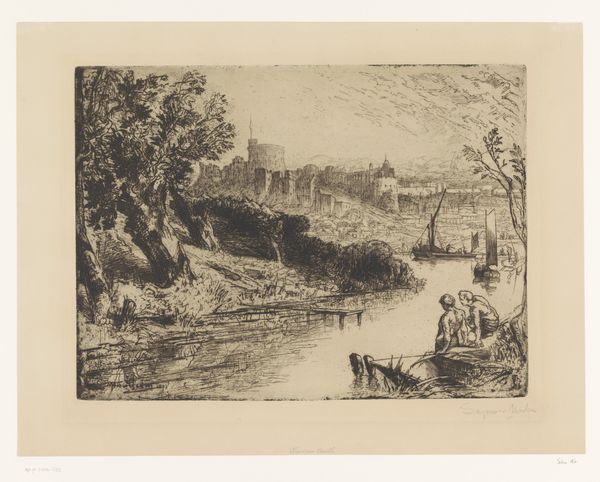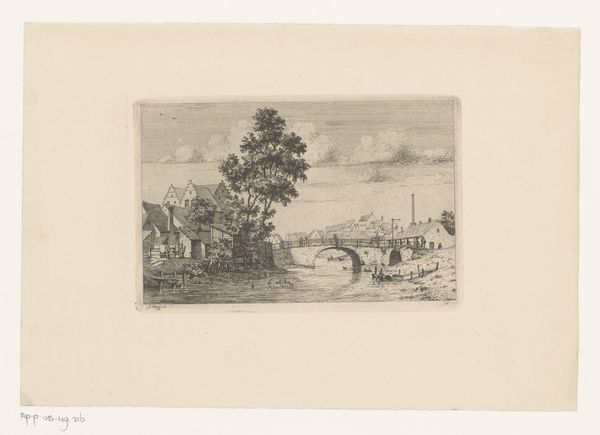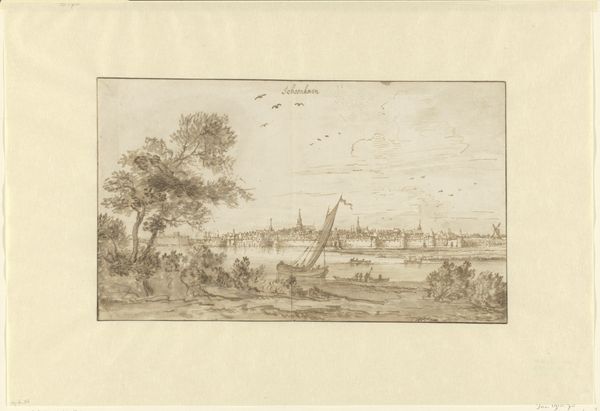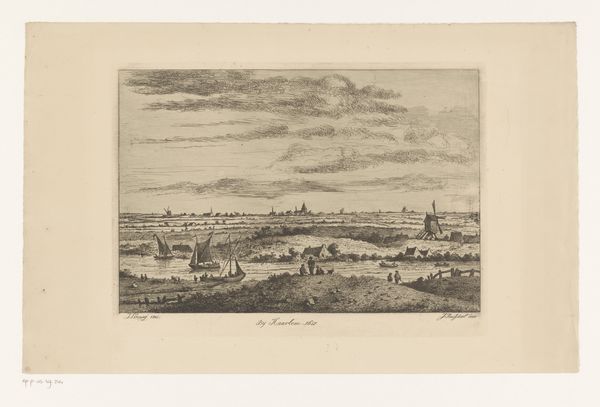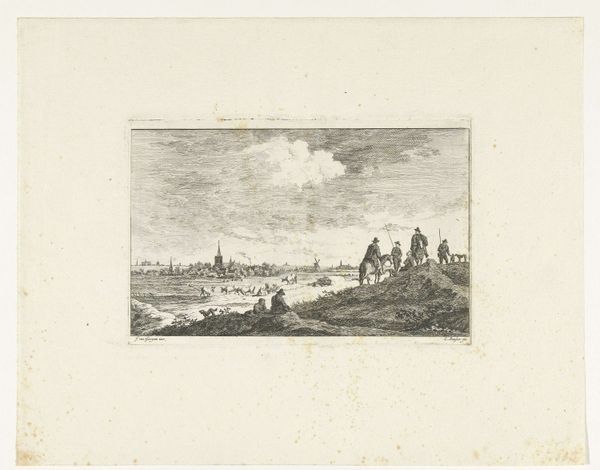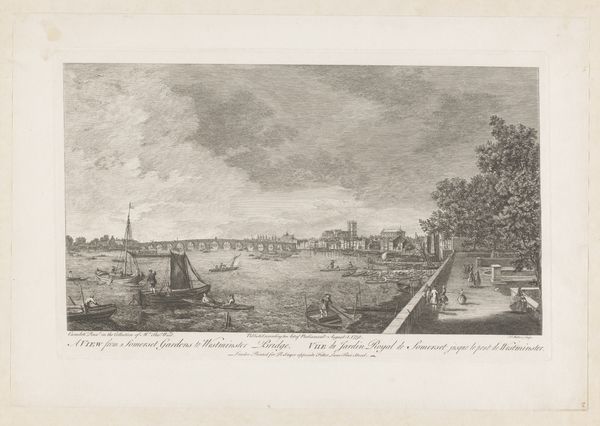
Gezicht op de Hogesluis en de Amstel, met links de Weesperzijde en rechts de Utrechtsepoort 1685 - 1748
0:00
0:00
print, engraving
#
dutch-golden-age
# print
#
landscape
#
cityscape
#
engraving
Dimensions: height 174 mm, width 194 mm
Copyright: Rijks Museum: Open Domain
Jan Smit created this print of the Hogesluis and the Amstel, sometime around the late 17th or early 18th century. It offers us a glimpse into the bustling life of Amsterdam. The image constructs its meaning through familiar visual codes. We see windmills, boats, and people from various social classes. The Dutch Golden Age, when this was made, saw a surge in urbanization and trade. The print shows us how the city's infrastructure was developing to accommodate this growth, with the Hogesluis bridge acting as a vital artery for transportation and commerce. Amsterdam became a hub for intellectual and artistic exchange, but also a place defined by social hierarchy. To truly understand this artwork, we can look at city archives, period maps, and economic surveys. These resources allow us to see how it reflects and shapes the social context of its time, offering a window into the complex interplay between art and society.
Comments
No comments
Be the first to comment and join the conversation on the ultimate creative platform.
